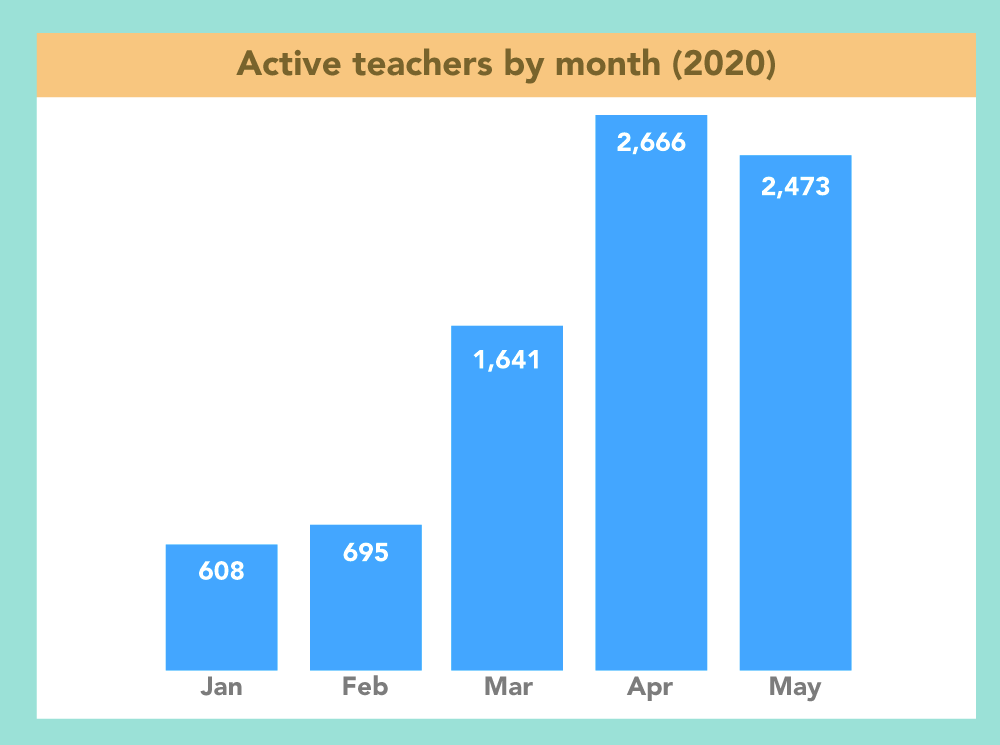
Pivoting to distance learning: Socorro ISD’s Story
Introduction
When the COVID-19 pandemic forced schools to shift to distance learning in March 2020, the sudden change left many with a new challenge: drops in student engagement. But Socorro Independent School District in Texas successfully kept students logging in and learning, including its English learners (who represent 22% of the student body). Let’s look at how Nearpod helped the district adapt to a time of continuous distance learning.
The challenge
Reflection point: How can educators maintain student engagement when shifting to distance or hybrid learning?
Educators at Socorro ISD, a K-12 district in El Paso, Texas, needed students to pivot to learning from home quickly as a result of COVID-19. They had to accomplish this in a way that worked for all students, including English learners, students with IEPs, and those without access to WiFi in their homes. And, the resource they chose had to work with any devices that students had access to at home.
Socorro ISD educators wanted to continue to provide rigorous, standards-aligned instruction. They also wanted to maintain feedback loops with students during lessons, even in a distance learning environment. However, administrators didn’t want to add to teachers’ stress by introducing new tools.
The solution
Reflection point: What features are important for success in remote and hybrid learning?
“Nearpod was what really brought a common platform, and ultimately, a way that we were able to give students the ability to do their learning in a variety of situations where some had internet access at home, and others did not,” said Instructional Technology Coordinator, Miguel Moreno. “It gave some flexibility for us to be able to deliver these lessons to our kids as we made that transition.”
Nearpod merges formative assessment and dynamic media. The platform contains a library of more than 22,000 standards-aligned lessons and videos, and teachers can upload their own.
Nearpod was implemented by Socorro ISD’s Bilingual/ESL department in 2016. In 2017, the platform was expanded to the WIN Academy program, which supports students who struggle in a traditional education setting. Socorro ISD rolled Nearpod out district-wide in the 2018-19 school year.
Socorro ISD found the Nearpod features most useful during the closures to be:
- Usability across all subjects and departments
- Virtual reality, videos, and simulations in the premade lessons, which held student interest
- Capacity for delivering live or self-paced lessons on any device
- Ease of use with video conferencing tools plus lessons that are easily edited or created
- Real-time student feedback encouraged reflection; it also helped teachers adjust to students’ needs
- Identification of students who couldn’t/didn’t respond so teachers could take appropriate action
Some teachers had not used the platform on a regular basis, so the district provided guidance on how to create an effective Nearpod lesson. Teachers were asked to incorporate at least five formative assessments in each lesson:
- Activate prior knowledge to start the lesson (e.g., a Collaborate board to see what students already know about a topic)
- Include 3+ checks for understanding throughout the lesson (e.g., Matching Pairs with instant student feedback for vocab practice)
- Insert a reflection point at the end of the lesson (e.g., a Time to Climb gamified quiz)
Additionally, Socorro ISD designated hours for each school’s parking lot to be a WiFi zone, so students who didn’t have access to WiFi at home could come and complete their schoolwork from cars. The district also invested in mobile devices that could be checked out to students.
Teachers delivered Nearpod lessons across core content areas. They also taught non-core subjects such as social-emotional learning, college and career readiness, and English learner content.
Teachers launched live sessions for students alongside video conferencing tools, like Microsoft Teams. They also assigned self-paced lessons for students to access on their own time.
Teamwork among departments strengthened district response.
Reflection point: How does working together support training and professional development?
The academic services, instructional technology, and library services teams took the following actions to quickly organize teacher support:
- Instructional officers used Nearpod to create self-paced “refresher” webinars on using the platform
- Instructional technology staff offered professional development on campuses
- Instructional officers served as extra trainers.
- Both teams also worked with professional learning communities
- District librarians recruited parents as remote learning co-teachers
- Instructional tech staff created a Nearpod lesson to show parent volunteers how to read lesson plans
Results
Students participated in five to six live Nearpod lessons per week. Parent co-teachers gave both students and teachers added support. Co-teaching also increased parents’ engagement in student learning.
The teams’ efforts in teacher support paid off. In March, the platform recorded 1,641 active teachers from the district (up from just 695 in February). In April, the number of active teachers rose to 2,666.
The 2018-19 school year had seen solid student usage (2M+ student interactions). In March and April 2020, usage skyrocketed: 1.2M+ student interactions in March and 5.5M+ in April. In fact, by the end of the 2019-20 year, student interactions for that school year had soared to well over 11M. Students were motivated to learn!


Key takeaways: Successful student engagement is possible, even remotely. Socorro ISD’s example highlights the key ingredients:
- Selecting edtech tools that enable lesson delivery across all departments and devices, ensuring instruction remained well-rounded and rigorous
- The ability to get real-time feedback from students and ensure actual student-teacher interaction, boosting student engagement
- Parent involvement in student distance learning, adding to students’ and teachers’ sense of community and support
- A steady but not overwhelming flow of lessons, four to five per week so students were challenged but not discouraged
- Lessons constructed to regularly check for understanding, with five formative assessments per lesson, ensuring students stayed on track and motivated

Nearpod’s award-winning platform is used by thousands of schools around the globe, transforming classroom engagement.








